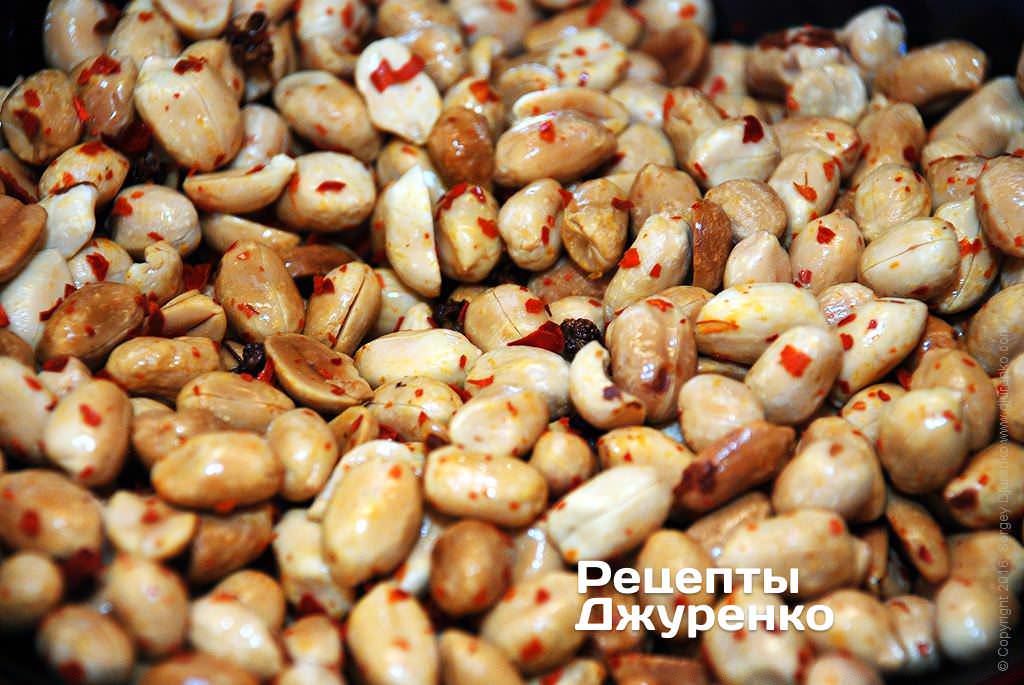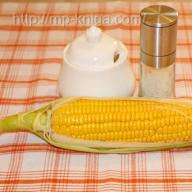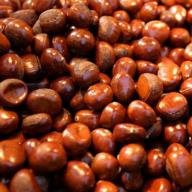A long time ago, when I was very little, my dad took me to the Bird Market on Saturdays to “look” at the hamsters. I was of little interest to hamsters; aquarium fish, a boa constrictor in an aquarium, and unshelled peanuts sold “for glasses” were of more interest to me. In those distant times, peanuts were small and poorly cleaned, or were sold in “shells.” It was the height of luxury to stand and peel these very shells, extracting small nuts in the red husk.
The flowering legume peanut (lat. Arachis) is a ground nut (although it is not a nut), a close relative of the bean, cultivated throughout much of the populated world. I read somewhere that the name “peanut” probably comes from the Greek αράχνη, which means spider. Association with the beautiful web-like pattern on peanuts. Peanuts contain a lot of high-quality oil (up to a third of the total weight), which is squeezed out and used for cooking or for peanut butter. In Southeast Asia, peanut butter is one of the most common.
You can read a lot about the benefits and harms of peanuts, as well as about almost any well-known product. It is worth remembering that peanuts are very nutritious and contain many vitamins and microelements. Peanut fruits contain powerful antioxidants and complexes for the proper functioning of the heart and blood vessels. But, unfortunately, it is also an allergen. For people who are allergic to peanuts, eating them is simply fatal.
Raw peanuts are rarely eaten; most often, peanuts are roasted. Moreover, they are simply fried, or with salt, pepper and paprika, or, as you can see in any store, fried with various chemical rubbish.
Meanwhile, fried peanuts are very tasty if cooked with soul. High quality raw peanuts are available almost everywhere. It is inexpensive, and you can roast peanuts at home without buying bags with unknown contents. It's worth figuring out how to roast peanuts.
Delicious homemade roasted peanuts. Lightly salty and with mildly hot pepper. There are many frying technologies. The easiest way is to pour the peeled raw peanuts onto a baking sheet and place it in an oven preheated to 70-80 degrees for 15 minutes. If you have a microwave at home, you can roast peanuts in it. Given the very high fat content in the fruit, peanuts are perfectly heated and fried from the inside.
We tried many ways and techniques for frying peanuts, and settled on the microwave. It's convenient and fast enough, the fried peanuts turn out incomparable.
Roasted peanuts. Step by step recipe
Ingredients (10 servings)
- Large raw peanuts 0.5 kg
- Mildly hot capsicum 5-10 pcs
- Sichuan pepper 1 tsp.
- Salt 1 tsp.
- It is more convenient to prepare roasted peanuts from fruits that have already been peeled from the red husk. They are large and have a pleasant yellowish-white color. By the way, the taste of raw peanuts is reminiscent of beans. It's easy to check by chewing.
Raw shelled peanuts
- I'll tell you about peanut additives. One day, roasted peanuts with hot and Szechuan peppers were brought from China. For obvious reasons, the composition is somewhat intimidating; the bright red hue is strongly associated with a very pungent taste. As an indicator - red means fiery. Until we tried peanuts with pepper. This is delicious! And not at all fiery. Of course, there is spiciness, but it is soft and very pleasant. I would even say that peanuts with additives fall very far short of “spicy”.
Dried peppers with a mild hot taste
- Dried peppers imported from China, although they have a spicy taste, are rather mildly spicy. If you discard the seeds and white membranes, which contain the bulk of capsaicin, the taste will be closer to neutral, with a not very strong aftertaste. I would say that on the Scoville scale no more than 500-600 units. For comparison, Tabasco sauce is 2500-5000 units. The hot peppers we sell are much hotter than the Chinese ones. But, I was surprised to see Chinese peppers on sale here, in almost any large store, we simply never paid attention to them.
- Adding a small amount of Sichuan pepper, which is also commercially available, significantly improves the taste of peanuts. But this is optional. Sichuan pepper, used in cooking, is the shell (husk) of the fruit of the citrus plant Zanthoxylum piperitum. The taste is like nothing else. It is a cross between the taste of anise, nutmeg and lemon. Rather than being spicy, it is very strongly aromatic and leaves a lingering, pleasant taste in the mouth with a slight numbness.
Sichuan pepper
- Peanuts need to be salted. If you simply pour salt into peanuts and fry them, most likely the salt will squeak on your teeth like sand. Salt does not dissolve fatty peanuts. You can salt it in different ways, but I found it convenient to dissolve 1 tsp in a small amount of boiling water. salt and pour the salt solution over the raw peanuts for 1-2 minutes. Then place the peanuts in a colander to drain. Then, when you start cooking in the microwave, the water evaporates very quickly, but the salt remains, and is not noticeable to the eye and is not felt in the form of grains. The peanuts are well salted, in moderation - and this is the main thing. I even read that raw peanuts are boiled in salted water before roasting the peanuts.
Soak peanuts in salt water
- Prepare hot peppers in advance. If you don’t have mildly hot peppers, you can take a much smaller amount of regular hot pepper and grind it more strongly. But I would not recommend using ground pepper powder, it will instantly stick to the oily surface of the peanuts. Free dry pepper pods from seeds, tails and, if possible, from internal partitions. Cut the remaining red pods randomly with a knife, preferably into strips.
- Place the salted peanuts on a large plate and place in the microwave. It may be worth reducing the power output for roasting peanuts if your oven is powerful enough. As a matter of fact, what you roast peanuts in is unimportant. It can be perfectly fried in a dry hot frying pan or in the oven. The principle is to monitor the process continuously and carefully.
Roast peanuts then add Szechuan pepper
- The initial heating will very quickly evaporate the water remaining from the brine solution. After this, the peanuts will begin to fry very quickly.
- During frying, peanuts must be stirred often enough, otherwise they will simply start to burn. As soon as the peanuts begin to fry, this will be clearly noticeable by the appearance of a pleasant nutty smell and a slight hiss, add Sichuan pepper, if desired and to taste. For 0.5 kg of peanuts, 1 tsp is enough. Sichuan pepper. Spices usually don't handle heat well, but peanuts only take a few minutes to roast in the microwave, so there's no need to worry. If you are really afraid, just add the pepper to the peanuts a minute before the end of frying. Adding 20-30 seconds at a time, fry the peanuts until desired readiness.
- Please note that peanuts, due to the very large amount of fat in the fruit, heat up very strongly and retain heat for a long time, so they will continue to fry even after they are removed from the microwave (oven, oven, or simply stop heating). It is important! If you don't overcook the peanuts a little, they will cook perfectly as they cool.
- As soon as the heating of the peanuts has stopped, immediately add the prepared and chopped hot pepper to it.
Add chopped hot pepper to roasted peanuts
- Stir and wait until it cools completely.





